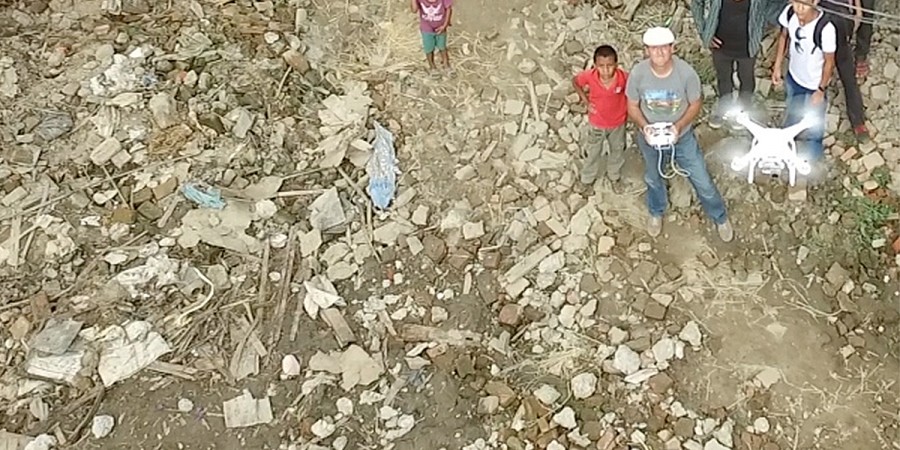Late September in Nepal, warm and dry after the monsoon rains subside, is an excellent time to take to the skies. My colleague Patrick Meier, founder of the UAViators Humanitarian UAV Network (UAViators.org), guides students, faculty and community members from Kathmandu University and Kathmandu Living Labs through a training in how and why to use small flying robots, popularly known as “unmanned aerial vehicles” (UAVs) or “drones,” to assist with critical functions for disaster preparedness and response. Patrick has been joined by a professional team from DJI, the world’s leading commercial manufacturer of small UAVs (including the ubiquitous Phantom), and Pix4D, which makes some of the best and most widely used software to process and analyze the imagery captured by these vehicles. The Nepali audience is receptive and eager to learn. They’ve just been through one of the worst disasters in the country’s history and seem well aware that effective, safe and coordinated use of UAVs, along with the high-resolution data that UAVs produce, may make an enormous difference in their abilities to assess damage, prioritize needs, find loved ones and perhaps even ferry essential relief goods and medical supplies into disaster-affected or remote areas. Over the course of a few intensive days (reported here by the Washington Post) they produce and evaluate information products ranging from mosaic images of areas like the town of Panga which is still reeling from the after-effects of the earthquake, to 3D models of hospitals which may one day guide accurate, rapid determinations of how essential infrastructure fares during disasters. With the skills they’ve acquired, networks strengthened, and the hardware and software donated to them by DJI and Pix4D, they have an impressive emerging capability to guide the application of aerial robotics for humanitarianism from the ground up for communities throughout Nepal.
Forming UAViators — the Humanitarian UAV Network
The community-based humanitarian UAV training in Nepal is only the latest in a series of events across the world over the past few years which have brought aerial robotics to the brink of mainstream acceptance as a tool for humanitarian and development assistance. During the response to Typhoon Haiyan I helped the Danish company Danoffice, which produces the Huginn X-1 quadcopter, find ways to put their tools to use for damage assessment in the cities of Tacloban, Carigara and others. I was stunned as I scanned the skies that many similar but largely unconnected and uncoordinated experiments were underway throughout the Philippines. A vibrant new community of humanitarian innovation and practice was taking flight.
It was this same type of experience that motivated Patrick in the wake of Typhoon Haiyan to form UAViators as a way to convene this distributed but like-minded community around a shared vision of the potential for UAVs to improve crisis response and community resilience. Diverse UAV deployments in Haiti, Vanuatu, Bhutan, parts of Africa, and many other places in the years since Typhoon Haiyan, have been field testing the technologies, solving the Big Data problems posed by massive new sources of high-resolution imagery, and coalescing around a set of standards and practices to ensure that these tools are used ethically, safely and effectively.
The Humanitarian UAV Code of Conduct
Perhaps the single greatest accomplishment of UAViators to date, with significant implications for discussions at the World Humanitarian Summit about humanitarian response technologies, frameworks and standards, has been the creation and refinement of the Humanitarian UAV Code of Conduct. The Code of Conduct is an openly conceived, voluntarily adopted and collaboratively written document which establishes the basis for how small aerial robotics can be integrated into humanitarian response without endangering lives, threatening privacy or causing more problems than they solve. Patrick and I strongly encourage everyone interested in this field to take the time to read and respond to the Code of Conduct, and then to join us in the UAViators network as we work to create a future where rapid advances in robotics technologies help to make communities throughout the world more capable of improving their health and well-being, reducing their vulnerabilities and strengthening their capacity to withstand the mounting crises of our fragile and turbulent planet.


Comments